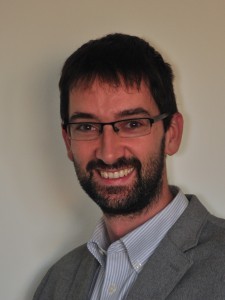Roberto Tron: Redefining Health Care for Aging America
With adults age 65 and older forming the United States’ fastest-growing population segment, more Americans are bound to experience severe and complex health conditions. To meet the needs of the country’s graying population, the current health care system must rethink its existing treatment approaches for older patients.

This is where Roberto Tron, an assistant professor at Boston University Division of Systems Engineering, comes in. With core competencies in robotics and
automatic control systems, he is pioneering a system that monitors and assesses the movements of post-stroke patients to predict and prevent any functional decline.
“I always wanted to make some project that can help humans, not just robots,” he said.
For post-stroke patients, movement can often be challenging as their muscles are too weak or they are unable to control their muscles, which puts them at risk of slower reaction times or falling. But with electrostimulation suits that help activate and coordinate different muscles and accelerometers that help regulate the electrostimulation, these patients can afford synchronized movement.
Together with Lou Awad, a movement scientist at Boston University Neuromotor Recovery Laboratory, and David Levine, a clinical investigator at Brigham and Women’s Hospital, Tron concluded two deficiencies with the existing system. First, it only helps enable a limited range of movement. Second, it involves many standardized tests that require trained clinicians to administer.
By leveraging his knowledge in robotics, Tron seeks to automate this system.
“I try to branch out to other fields and find things that are at the intersection of different fields and see if I can bring my tools to problems that I find interesting, make some progress there,” he said.
His upgraded, at-home system involves two components.
First, electrostimulation suits and accelerometers are placed on a patient’s legs, and the patient is monitored by a deep learning camera positioned where they spend most of their time. The information collected will then be leveraged by robotics to reconstruct 3D poses of the patient’s joints.
Second, the technology continually sends data over to a secure server, where scores are measured against pre-determined thresholds. If any score is detected to fall below these thresholds, the system will send an email to the patient’s doctor, notifying them to check in with their patient.
Tron and his team are also working to take the current system even further by making the electrostimulation assistance specific to a greater range of different activities.
With this development, patients can be continuously assisted in the comfort of their own homes, instead of having to travel to a rehabilitation facility every week. It may also help them retain some form of muscle memory even when the electrostimulation suits and accelerometers are turned off, which can help with movement in the long run.
This upgrade turns a once-reactive system into a preventative one. Rather than wait for a catastrophic health event to occur before the patient is treated, the system’s consistent and extensive data tracking helps health care workers recognize subtle signs of functional decline for early intervention.
The team continues to navigate obstacles in their quest to make the existing system more robust. In the field of robotics, Tron is accustomed to conducting tests only once or twice in the lab to ensure his invention works. This time, they have to conduct standardized tests in 50 different homes and 17 in the lab. Since the layout of every patient’s home is different, they also have to optimize the setup of the deep learning camera.
“There was a lot of trial and error or things we learn in making the system robust enough to be deployed,” Tron said.
While Tron brings the knowledge and technology to improve the system, he relies on Awad and Levine for their medical expertise and access to patients to truly make things work.
“It’s been a very fruitful collaboration,” Tron said. “I think we learned a lot both ways on what’s possible, what we need to focus on and how to talk each other’s language.”
Written By Emily Tan